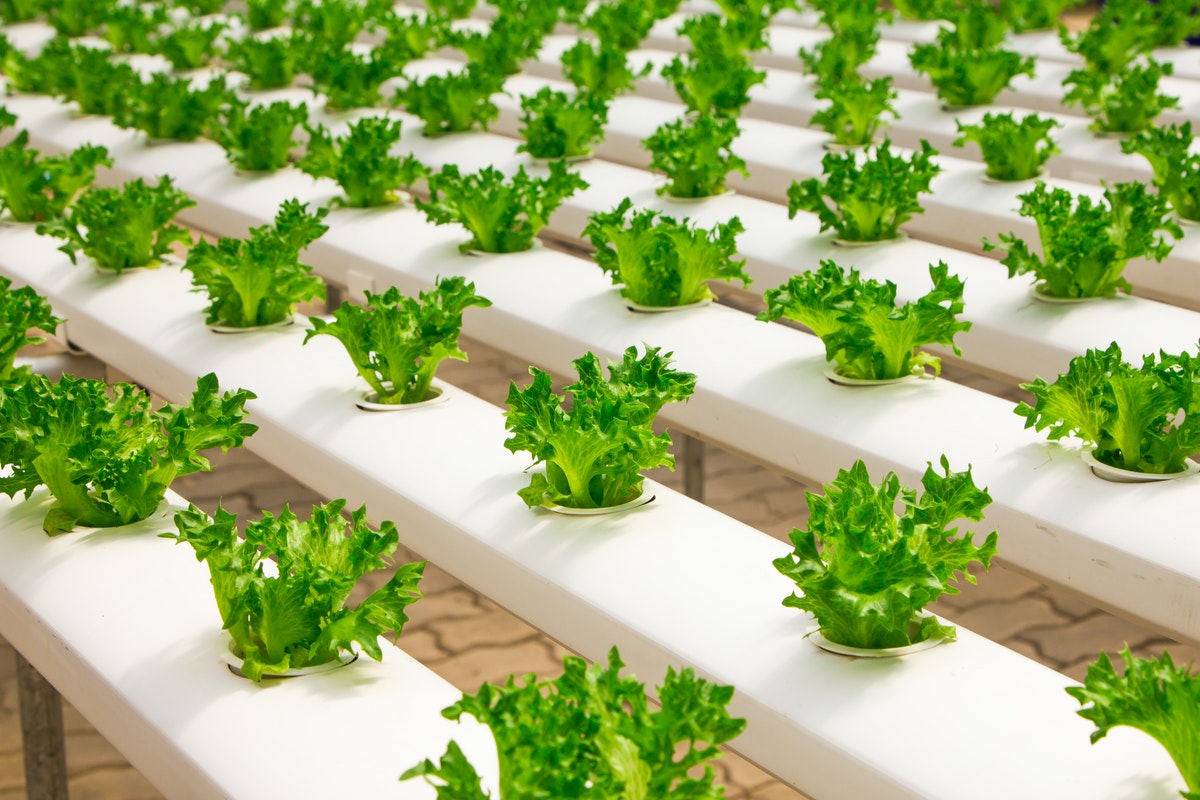Hydroponic gardening is a unique and interesting process. Hydroponic gardening is a great way to extend your growing season by growing fruits and vegetables indoors. It flips the script on so much of what’s considered traditional or standard about gardening, and having a hydroponic garden is an immediate conversation starter. It looks impressive, but that also means it can be intimidating to start. That’s why we’re here to help. This guide on how to start a hydroponic garden will help you get started with setting your system up and caring for your plants.
Planning

The first step is to choose your plants and the type of system you want to use. Certain plants have an easier time growing hydroponically than others, so take your time deciding. Some simple ones to start with are spider plants, pothos, mint, and lettuce, but those are by no means the only good ones to start with! Don’t forget to measure out how much space you have, as that will impact the size and potentially the type of system you get.
There are several types of systems, each with its own pros and cons. If you plan on growing just one plant, then you don’t need a system and can grow your plant in a regular container of water, as long as you care for it properly. However, when growing multiple plants, it becomes more economical to have a system.
Types of systems

Deep water system
Deep water culture is likely what you picture when thinking of hydroponics. It’s the simplest system, with a container of water below and plants above, with their roots in the water and their tops supported by some type of surface. It also contains an aeration device of some kind, typically an air pump. It’s an easy place to start, and the easiest to DIY.
Flood and drain system
A flood and drain system, also called an ebb and flow, is a little more complicated but still simple enough to have at home. In this system, the plants are planted in whatever growing medium they would normally be planted in, and the nutrient water is pumped in to flood the soil. A drain is used to keep the water level in the soil from overflowing, and a timer is used to make sure the floods happen at regular intervals. This method requires just slightly more technical skill than the deep water culture, but is still easy enough for beginners.
Drip system
The drip system is reminiscent of a cross between hydroponics and drip irrigation. There is one layer or container of water and another where the plants are suspended by a surface similar to the one in the deep water culture system. The water is pumped into the plant’s container, where it drips into the roots through a series of holes in the tube. This system is another one that requires slightly more skill than the deep water system but is still doable.
Setting it up

Once you’ve chosen your plants and system, it’s time to get started setting it all up! You have one final decision to make. Will you purchase your system as a kit, or will you do it yourself? There are pros and cons to both options, so it really comes down to your time, energy, and comfort level.
The kits are more expensive than building it yourself, and you have slightly less freedom in how your system is set up. However, they’re also easier to put together, and, since they’re made by professionals, the quality is more reliable. If you choose a kit, research the brand thoroughly and check to see what’s included in the kit versus what you may need to provide yourself.
Doing it yourself is less expensive, but it does take more time and energy. There’s also a slightly higher risk of human error, making it a little less reliable if you aren’t experienced in building these types of things. If you choose to DIY, take your time picking the materials you’re using. Check them carefully for cracks or flaws and make sure all the parts are the correct size so that they fit together nicely.
What plants can you grow hydroponically?

Most plants can grow hydroponically, but which plants are the best for beginners to start with? We’ve already mentioned mint, lettuce, spider plants, and pothos, but there are others as well. If you want to grow ornamental plants, some of your options are orchids, marigolds, nasturtium, sunflowers, daisies, and zinnias. Growing ornamental plants hydroponically can be a fun way to propagate plants, and they make for an interesting display. If you’d prefer to grow crops, leafy vegetables like lettuce, kale, and spinach are excellent options, and vining berries like strawberries are great choices. Herbs are another option, with mint, chives, basil, and thyme being some of the best choices.
Once you’ve got your system going, caring for and harvesting your vegetables is the same as any other garden! Make sure to use a water-soluble fertilizer, keep an eye out for pests, and harvest the plants once they’re mature. Whether you’re looking for a simple way to grow a little extra lettuce or a more sophisticated operation to replace your traditional garden, you’re well on your way. Take your time and don’t be afraid to talk to local experts if you need help! If you want a hydroponic garden, there’s no reason you shouldn’t have one, so start today and enjoy your bountiful harvest.




